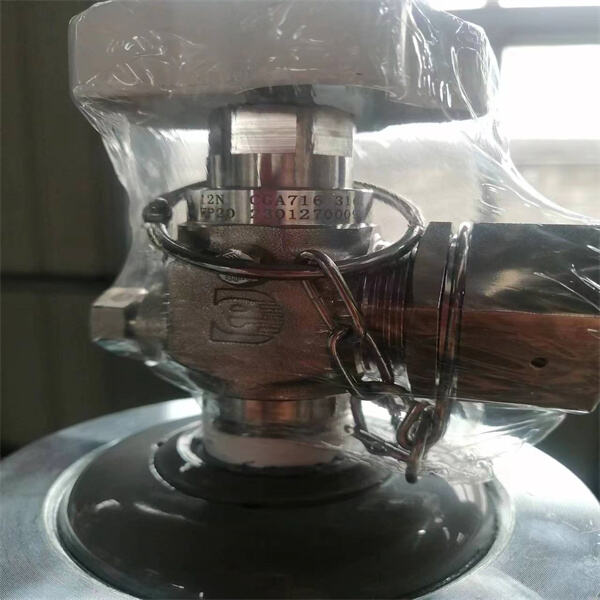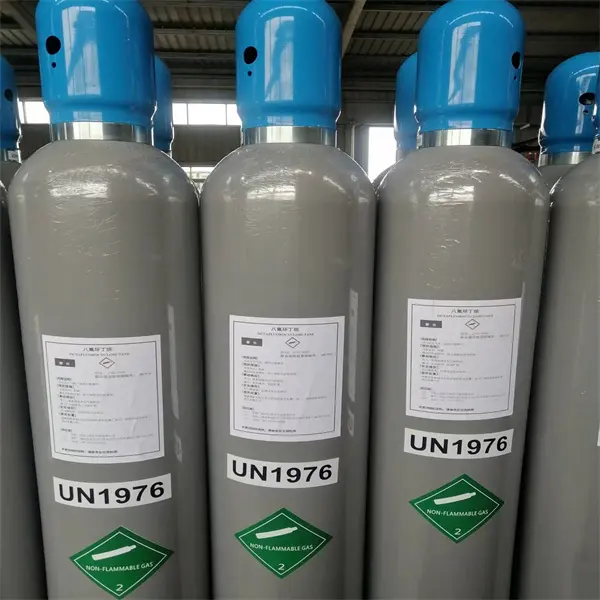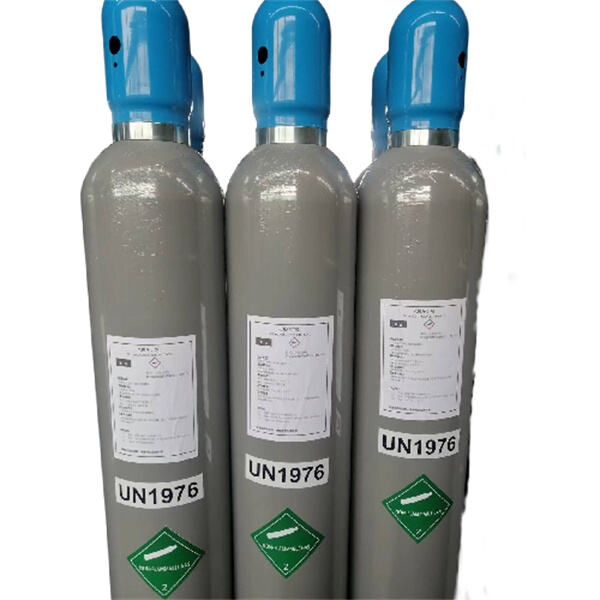Nasa lahat ang mga semiconductor, mula sa iyong smartphone at personal na computer hanggang sa anumang uri ng elektronikong gadget. Kailangan silang gawin sa pamamagitan ng isang tiyak na proseso at gumamit ng maraming uri ng gas. Ang sumusunod ay nagpapakita ng isang relasyon ng maraming uri ng gas na ginagamit lamang ng isang industriya at kung paano ang mga mataas na teknilogiyangsubstansiya ay ipinagkakaloob upang lumikha ng mga bagay na talagang kinakailangan namin. Ang Maramihang Uri ng Gas na Ginagamit sa Mundo ng Paggawa ng Semiconductor Lumilikha ng mga semiconductor gamit ang isang komplikadong serye ng proseso tulad ng pag-eetch, depostrasyon at pagsisilbi. Ang iba't ibang katangian at aplikasyon ng mga gas na ito ay bumabago sa tiyak na gamit o kondisyon ng atmospera, maaaring ito'y sa paligid ng mga tagapaghanda ng industriyal na gas, mga sikat na tagapaghanda ng espesyal na gas para sa semiconductor, o sa laboratorio, nagbibigay ng isang malawak na espektrum nakopatulanlahat nila ng kritikal na katangian na kinakailangan upang mapunan ang trabaho nang satisfaktoryo. Sa kasalukuyan, sa kontekstong ito, ipinapakita namin ang ilang mula sa mga unggulating gas na ginagamit sa proseso ng paggawa ng material. Silane SiH4: Ang gas na ito ay kulay-bulaklak at din dinadaglat bilang isang sigifikanteng silicon-base na elektронikongmaterial. Kilala itong maging maikli at mabilis na magsisisi sa oxygen at tubig upang makabuo ng silicon oxide SiO at hydrogen gas. Maaaring gamitin ang silane upang ilagay ang silicon-base na material, tulad ng SiNx, yaon man ay mabilis o sa relatibong mababang temperatura. Elemento ng Nitrogen N2: Ang gas na ito ay hindi aktibo at humahambing sa oxidasyon. Ito ay patuloy na pinagtatrabaho at kinakailangan para sa pagpaputok ng device sa proseso ng maintenance upangalis ang pagdami ng O2 at moisture. Gaya ng gas na ito ay gagamitin upang magpadala at magtransport ng mga aktibidad ng iba pang mga gas din, magtrabaho bilang carrier gas sa nichrome vapor deposition at plasma enhanced nichrome vapour deposition.
Hidroheno (H2) - Ginagamit ang hidroheno bilang isang reduksyon na gas sa pagtanggal ng mga impurehiya mula sa mga materyales. Sa paggawa ng semiconductor, ito ay mahalagang hakbang sa ilang proseso tulad ng annealing at pagsisilbing malinis. Sa dagdag pa rito, gumagawa ng metal gate ang hidroheno na kinakailangan sa produksyon ng advanced cmos devices.
Maaaring Gamitin na Oxygen (O2/O) - Magpasok ng sheet at spec lead times, etc. O Gas Habang ginagamit ang oxygen sa maraming plasma processes tulad ng etch at strip/ash o ]]>], ito rin ay naglilingkod bilang reactant para sa pag-oxidize ng silicon-based materials to SiOx o pasiglahin ang metal surfaces sa pamamagitan ng oxidasyon.
Kloro(Cl2): Ang kloro ay isang dilaw o pula na umuunat, hindi metallikong anyo bilang likido na may masakit na amoy. Ang gas na ito, na napakasigla sa reaksyon kasama ang silicon-based materials, silicon dioxide, at maraming metal tulad ng aliminio, ay nakita na may ilang aplikasyon sa etching ng semiconductor structure.
Ang paggamit ng mga gas sa produksyon ng semiconductor ay nagdulot sa paglikha ng mataas na katumpakan ng elektronika, tulad ng ginawa ng pagtaas ng kakayahan sa paggawa ng semiconductor. Ang mga gas ay may ilang malaking gamit at benepisyo sa industriya ng semiconductor.
Mga gas tulad ng Silane, ammonia at nitrogen ay ginagamit upang mag-deposito ng silicon oxide o nitride na magiging mga bahagyang pelikula ng semiconductor. Pagde-deposito.
Pag-eetch: Ito ay ginagamit upang selektibong alisin ang hindi kailangang mga anyo o pattern mula sa mga semiconductor gamit ang mga gas tulad ng chlorine, fluorine at oxygen.
Prosesong mga gas: Kinakailangan ang hydrogen at nitrogen para sa operasyon ng equipment ng pagsisiyasat ng semiconductor (puripikasyon) upang maiwasan ang mga impurity na maaaring makapekto sa pagganap ng device.
Pagpurga: Isa sa mga pangunahing gamit nito ay kung saan ito ay gumagana bilang purge gas kapag may maintenance works sa mga equipment, upang alisin ang oxygen at moisture mula sa sistema samantalang pinapanatili ang mga materyales sa linya libre.

Bilang isang kahihinatnan, walang dulo ang paghahanap ng lalo at lalo pang maimplengso na mga materyales at proseso habang umuunlad ang industriya ng semiconductor. Kinakailangan ang mga pinagbutihang gas para sa mga susunod na pag-unlad ng semiconductor. Narito lang ang ilang mga high-tech na gas sa paggawa ng semiconductor:
Fluorocarbons: Ang dahilan kung bakit mabuti ang mga gas na may fluoride para sa paggawa ng pinakabago na disenyo ng circuit ay dahil sumisigla at pumipili sila kapag nagre-react sa parehong etch (alisin ang mga parte) at deposition (dagdagan ng mga bahagi).
CO2 - Isang inert na gas na ginagamit para sa mga aplikasyon tulad ng sputtering, CVD at pagsisilbi.

Habang dapat itingin ito bilang isang hakbang patungo sa paggawa ng semiconductors, lamang dahil sa bagong mga sistema ng pagdadala na magagawa ngayon. Laging hinahanap ng mga manunufacture ang mga paraan upang mapabuti ang kamalayan, bawasan ang basura at mapabilis ang siguriti. Ito ang ilang bagong napakahaba na mga gas, at mga sistema ng pagsasampa ng kimika na magagamit ngayon.
Sistemang pagdadala ng gas (para sa mga gas na nakakontrol nang maayos sa maliit na halaga ng kinakailangang gas / likido o kemikal sa mga semiconductor)
Pinagmulan: Advanced Wet Wafer Cleaning Systems gamit ang ozoone plasma at hydrogen peroxide para sa pinakamabuting paraan ng paglilinis ng mga impurehiya mula sa anyo ng semiconductor.

Maaaring mag-ipon ng mas malaking demand ang mga gas na semiconductor para sa mas epektibong elektronika, ngunit ito ay nagiging sanhi rin ng panganib sa kapaligiran. Mayroong ilang programa na itinatayo upang bawasan ang basura at muling gamitin ang gas sa loob ng industriya ng semiconductor. Hindi ito kakaiba kaysa sa kung paano gumagawa ang mga manunufacture upang mapasaya ang mga pangangatawan ng kapaligiran na nauugnay sa mga gas ng semiconductor;
Ang una at pinakadirekta, ay ang Pagbawas ng Basura -> Nakikitaan laging ng mga manunufacture ang pagbawas ng dami ng basura na ipinaproduce habang ginagawa ang mga semiconductor. Katulad ng pagbawas ng dami ng mga kemikal at gas na ginagamit, pagmumulit sa kanila kung saan posible o paggawa ng mga sistema ng closed loop.
I-pabalik ang 'pag-i-recycle' Ang pag-recycle ng mga gas at kemikal ay magiging isa pang mahalagang paraan na tumutulak sa pagbabawas ng mga epekto sa kapaligiran. Maaring mas madali ang pagsunod sa minimizasyon ng paglikha ng basura ng mga tagapagtatago kung pinahihintulutan ang pagbawi, paglilinis at pag-recycle ng mga gas o kemikal na ginagamit habang nagproducce.
Kwento: Mga gas ay mahalaga para sa paggawa ng ilang pinakamahusay na elektroniko sa labas. Nakakuha ang mga tagapagtatago ng dedikasyon upang mapabuti ang mga advanced na gas pati na rin ang mga solusyon sa paghahatid na sumusukat sa optimal na proseso, pagsunod sa minimizasyon ng basura at siguriti ng komunidad. Magiging tutulak din ang sektor ng semiconductor sa daan ng paggamit ng gas-at ang kabuuang imprastraktura ng mga gas na ito ay naglunsad ng maraming kampanya para sa sustinibilidad noong mga nakaraang taon.
Kinikilala ng AGEM na ang bawat kliyente ay kailangan ng iba't ibang bagay sa larangan ng espesyal na gas, tulad ng calibration gas. Nagbibigay kami ng pribadong solusyon upang tugunan ang mga tiyak na pangangailangan ng aming mga kliyente. Kung kailangan mo ng tiyak na halaga ng purity, laki ng tsilyinder o mga opsyon sa pakete, maaaring magtrabaho ang AGEM kasama mo upang ipasok ang kanilang produkto ayon sa iyong mga tiyak na kinakailangan. Ang antas ng pribadong ito ay siguradong makukuha mo ang pinakamahusay na calibration gas cylinder para sa iyong aplikasyon na aangat ang kabuuang ekispedisyon at pagganap. Hindi limitado ang linya ng produkto ng AGEM sa mga calibration gases. Kumakatawan ang katalogo ng AGEM sa mga Hydrocarbon Gases, Halocarbons, Chemical Gases at Rare gases. Maaari mong siguraduhin na mayroon ang AGEM ang eksaktong uri ng gas na iyong kinakailangan.
Ang mga dumi sa mga gasyong ginagamit sa paggawa ng semiconductor ay isang malaking problema. Sinusubok namin ang mga dumi kung hindi man lang limang beses upang tiyakin ang kalidad. Nag-aalok ang ating kompanya ng buong prodyuser at linya ng pagsusuri at ang aplikasyon ng mabuting kontrol sa kalidad at isang maayos na sistema ng serbisyo matapos ang pamilihan, upang tiyakin na tatanggap ang mga customer ng mga produktong may taas na kalidad at buong saklaw ng mga serbisyo. Ang aming pagsisikap na magbigay ng mahusay na serbisyo sa mga customer at mataas na kalidad ay isang bagay na nananatili naming bangga. Ang aming makakapangyarihang koponan ay palaging handa upang tulungan ka at tiyakin na tatanggap ka ng pinakamahusay na serbisyo hanggang sa iyong kabuuan ng kasiyahan. Ang aming serbisyo 24X7 ang nagpapahiya sa amin. Naroon kami para sa iyo araw-araw, bawat oras ng araw.
AGEM ay nag-aalok ng malawak na saklaw ng cryogenic cylinders upang mag-super-chill sa mga likido at gas tulad ng liquid oxygen at argon. Maaari rin itong humawak ng carbon dioxide, nitrogen at nitrous. Gumagamit kami ng imported na valves at instruments upang siguraduhin ang maximum na pagganap. Gamitin ang mga device para sa pag-iipon ng gas at ibigay ang priyoridad sa paggamit ng gas sa dagdag na presyon sa gas phase space. Ang double safety valves ay nagbibigay ng matatag na asikuro para sa ligtas na operasyon. Nag-aalok kami ng malawak na saklaw ng cryogenic cylinders na maaaring humawak ng super-chilled liquids na ginagamit sa pang-araw-araw na buhay. Buong Sukat: 80L/100L/175L/195L/210L/232L/410L/500L/1000L Trabaho ng Presyo: 1.37MPa/2.3MPa/2.88MPa/3.45MPa Disenyong Temperatura ng Inner Tank: +196 Disenyong Temperatura ng Shell Tank: 20oC+50oC Insulasyon: Vacuum with Multi-layer Wrapped Nakaukit na medium: LO2, LN2, LArLCO2, LNG
Nag-operate na ang AGEM sa Taiwan ng higit sa 25 taon. May malawak na eksperto sa R at D dito at maaaring mag-ofer ng natatanging eksperto sa mga larangan ng Speciality, Bulk, at Calibration Gases sa anim na iba't ibang rehiyon. Taiwan - Lungsod ng Kaohsiung (Punong-kwartir, Sentro ng R at D) India - Mumbai, Vadodara, Coimbatore, Pune, Bengaluru, Delhi China - Wuhan Gitnang Silangan - Dubai (UAE) & Karalita ng Saudi Arabia Nagkakaisa na Reino - Cambridge Solusyon para sa gas na inaasahan namin ay kumakatawan sa Teknikong Konsultasyon. Paglalapat at Pag-uulat. Pagsusuri ng Halaman. Pagpapakita at Pagdadala. Disenyong Drawing. Paggawa.